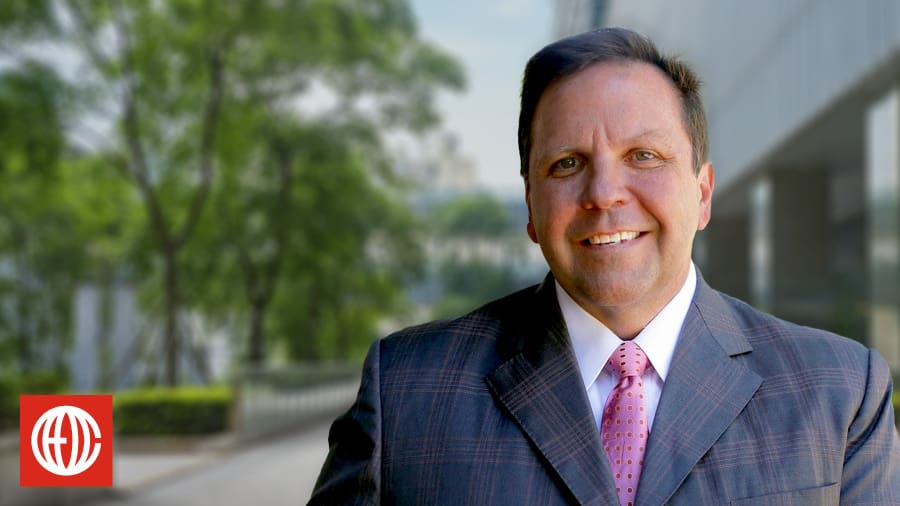Guest: Andres Molano, a coach at CEO Coaching International. Andres has led diverse, high-performing teams and grown international sales and operations throughout North America, Latin America, Africa, the Middle East, and Asia.
Quick Background: No company gets BIG by staying the same. At those moments when momentum is stalling and growth is plateauing, struggling CEOs often start chasing shiny objects or throwing money at the wall to see what sticks. Effective leaders face those same challenges by going back to square one and reassessing what’s essential to the company’s culture.
On today’s show, Andres Molano shares a five-part framework CEOs can use to drive a BIG culture transformation that will kick off a promising new chapter for their companies.
Keys to Culture Transformation from Andres Molano
1. Clarify your purpose.
In the early 2000s, 70-year-old block company Lego was struggling to compete against video games and more sophisticated electronic toys. A new CEO was brought in to stop the bleeding and help the company reintroduce itself to a new generation of kids and parents.
“The new CEO launched a strategic and organizational overhaul to improve customer connections,” Andres says, “increasing innovation and their manufacturing capabilities. They also began to look deeper and reconnected the organization with its purpose. This is something that you do not really resolve by hiring an advertising or marketing agency. It’s a journey of continually asking, ‘Why do we do what we do?'”
The new leadership also immersed itself in the company’s history. During that journey, they found a motto that Lego’s founder had hand-carved into a block of wood in 1932: “Only the best is good enough.”
“With a forward-looking approach, the CEO gave a modern-day interpretation and decided that the mantra meant continuous improvement,” Andres says. “Lego should always be providing the best material for children, the best place to work, an obsession with being a great company as opposed to a good one. With that clear purpose, over a four-year period that started back in 2007, Lego grew pre-tax profits by 400%. Purpose is generative.”
2. Align purpose and values to create a new culture.
Purpose is what you do. Values are how you do it. The strength of the connection between the two is often what separates great companies and their culture from bad companies and toxic culture.
Andres explains, “In values statements, you usually see words like Integrity, Communication, Respect, Excellence. There’s nothing wrong with this. But Enron had these values displayed in their lobby, and the leaders went to jail. So instead of just having a nice statement, you need to look to the tough dilemmas or those difficult tensions that managers are facing. When you come across this kind of dilemma, you can go right, which will lead to Result X, or you can go left, which will lead you to Result Y. So you want to have clarity. When someone in your organization encounters these situations, it should be clear what direction to take.”
Aligning purpose and values isn’t just a safeguard against potentially dangerous or damaging behaviors. Your culture can also be a positive force that inspires creative problem solving, innovation, and the kind of camaraderie that improves retention. We try to model this process with our CEO coaching clients by living our values acronym, PICNIC: we are Passionate about our work, we Impact our clients’ businesses and lives; we show Courage when clients need to hear uncomfortable truths, we work with No Drama and Integrity, and we always show our clients Compassion both personally and professionally.
3. Model the culture you want to build.
Andres believes that the CEO should be “the first ambassador” for the company’s values and purpose. He divides that ambassador’s role into four key responsibilities:
- Be the storyteller. “Everywhere you go, in every communication, you need to tell the whole company about your values and your purpose by actually living them.”
- Achieve company-wide buy-in. “Invite your employees to show their personal purpose.”
- Activate yourself. “How does my company’s purpose play into my own life purpose? How do I use purpose and values when I’m building my quarterly and annual plans for the organization? Am I thinking about how my decisions will impact purpose and how values will play out?”
- Align purpose and metrics. “Measure it. Conduct surveys. Get a clear picture of the cultural dynamics of your organization. This will provide a baseline to measure future improvements.”
4. Break down silos.
“In today’s economy, everyone knows that finding new ways to combine organizations and diverse knowledge is a winning strategy for creating value,” Andres says. “And it doesn’t happen naturally.”
That’s especially true if acquisitions are going to be a consistent part of your growth strategy. But it’s also relevant for CEOs who are eying a global expansion. As coach Erno de Bruijn noted on a recent podcast, syncing teams around the world who are used to operating in their own bubbles is a challenge for both your culture and your communication tech stack.
Andres recommends that CEOs use these four strategies to bust barriers, keep the whole company aligned, and unleash the full potential of their best people:
- Diversify your teams. “This shows team members how their knowledge can be linked to create natural collaboration.”
- Elevate culture change agents. “In many companies, you will find people who already excel at cross-functional collaboration. Make them leaders with an initiative to promote cross-boundary collaboration with minimal disruption.”
- Encourage questions. “People with high levels of curiosity are most likely to build networks that bridge disconnected parts of the company. Create an organization where it is safe to ask questions.”
- Be vulnerable. “When leaders show interest in what others are seeing and thinking by asking questions, it has a stunning effect. It prompts people in the organization to do the same.”
5. Get the right people in the right jobs.
“Jim Collins, in his book ‘Good to Great’, says people are not your company’s most important assets,” notes Andres. “The right people are. The right people will do great work and will push the rest of your team to the same. So go for A players who work well in a team.”
Of course, to circle back to one of Andres’ first points, a lot of talented people work at bad and mediocre companies. Or, at least they used to. Today, top workers have too many options if they feel like their skills are withering or they’re developing bad habits. High achievers want to work for a CEO who is modeling the company’s culture and inspiring everyone to keep Making BIG Happen.
“If you are embedding the purpose and the values in your decision-making process, culture will run smoothly,” Andres says. “Every time you are building your quarterly and annual planning sessions, think about those values and the purpose and how they will align with those decisions that you’re making. It comes from the top down.”
Top Takeaways
1. Reconnect purpose and values to create a dynamic new company culture.
2. Lead by example. The CEO has to be an inspiring ambassador, role model, and visionary who lives and breathes the company culture.
3. Hire A players who will play well in an A team and whose unique experiences and skillsets will rewire how every level of the business interacts and executes.
About CEO Coaching International
CEO Coaching International works with CEOs and their leadership teams to achieve extraordinary results quarter after quarter, year after year. Known globally for its success in coaching growth-focused entrepreneurs to meaningful exits, the firm has coached more than 1,500+ CEOs and entrepreneurs across 100+ industries and 60 countries. Its coaches—former CEOs, presidents, and executives—have led businesses ranging from startups to over $10 billion, driving double-digit sales and profit growth, many culminating in eight, nine, or ten-figure exits.
Companies that have worked with CEO Coaching International for two years or more have achieved an average revenue CAGR of 31% (2.6X the U.S. average) and an average EBITDA CAGR of 52.3% (more than 5X the U.S. average).
Discover how coaching can transform your leadership journey at ceocoachinginternational.com.
Learn more about executive coaching | Meet our world-class coaches








